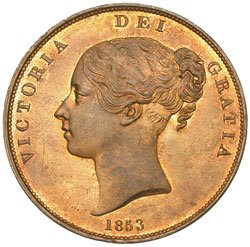
2010 sees the introduction of a new design for the reverse of the United States of America one cent piece, or penny, the obverse carrying the same effigy of Abraham Lincoln used since the coins introduction.
It is the third regular issue reverse design since the introduction of the Lincoln obverse in 1909, the first two reverses, the "wheat" and the "memorial" both having fifty year runs, with 2009 seeing a series of commemorative reverses. The new design is a simple shield that I'm sure Charles Barber would find pleasing. The zinc barons are obviously a powerful
lobby group in Washington (remember that since 1982 the penny is a zinc coin with a copper cladding), especially given the fact that despite being worse than useless in trade, each one cent coin costs 1.8 cents to produce! Countless millions, if not billions will be struck, filling jars and drawers and being a general nuisance.
Still, it's great if you happen to own shares in zinc companies.
If my previous post on the Lincoln penny doesn't appear below, it can be found here.

















































